
This is a member post by Pippa Jones.
Since the publication of the draft Wilmslow Vision document in March, the main focus of public comment has been on the proposals for housing on the green belt. As a member of the Consultation group, representing Transition Wilmslow, I want to comment on the process itself and the way in which it has been presented in the Consultation report.
The Stakeholders were individuals representing local organizations, including the High School, Wilmslow Medical Centre, Wilmslow Guild, Wilmslow Trust, the Evans Trust, Cycle Wilmslow and a number of other groups and organizations.
We were asked to think about the place we would like Wilmslow to be in twenty years time. It was clear from the discussions that there was a remarkable degree of consensus amongst most of the participants about the sort of town they would like to live in. This is reflected in the Vision statement which is entitled “Wilmslow, fostering a sense of community”.
We discussed making the town “flourish as a sustainable town which provides for the needs of the whole community”; keeping our green spaces; a “safe walking and cycling town”, recognizing the value of “high quality contemporary architecture”.
At around the same time that these deliberations were going on, Cllr Jones was appearing in the local press talking about his proposal for a “lifestyle centre”. I contacted the Town Clerk to ask why the life style centre was not being discussed at the Vision: he responded that no decisions had been made about the life style centre and those discussions were part of a separate consultation. This felt like the “elephant in the room” at the Vision discussions: although we did not discuss it with the Consultants directly, most people present did express the wish that the Rectory Fields and leisure centre should be preserved and that they liked the library where it is.
On the third session, we were presented with maps of Wilmslow and told that 1500 new homes “have” to be built in the town. We were not given the basis on which this figure was based. The group strongly expressed the view that brownfield sites should be chosen before any greenfield or green belt sites; that consideration should be given to converting brownfield sites that are currently empty office blocks; and that any housing proposals should ensure that houses are environmentally as sustainable as possible to reduce energy bills, and are built to a high architectural specification.
We also commented on the unsuitability of many of the sites chosen including concerns about traffic access, flooding, and green belt. We identified the Remenham site as an ideal site for high density housing (particularly if well designed with underground car parking) with a medical centre on site and within walking distance of the town centre.
At our final session, the consultants presented us with a number of issues that had not been discussed at any time by the stakeholders. These included a proposal for a theatre, “upgrading” the library, “upgrading the leisure centre” and “expansion of the High School”.
I objected, saying these issues had not been discussed by the group but was over ruled by the Consultant. We were told that we would have the opportunity to rate the proposals with green, yellow and red stickers. At the end of the meeting, that is what we did.
I, certainly, and a number of my colleagues, were under the impression that a green sticker indicated support, a yellow sticker indicated neutral and a red sticker indicated opposition. “Expansion of the High School” was associated with largely red stickers.
Feelings about High School extension ran high, because it is clear that this would lead to the ”lifestyle centre” option, with the destruction of our (newly refurbished) library, the leisure centre with its pool and theatre, and loss of the Rectory Fields, even though it had been off limits in the discussions.
When asked whether the monies gained by CEC from a sell off of valuable land in the town would result in the money being reinvested in Wilmslow, the Consultant responded clearly that CEC could spend the money anywhere, and would be unlikely in the extreme to reinvest it all in our town.
It is of note that at the minutes of the CEC March 2010 Corporate Scrutiny Committee notes: The Budget Challenge process also prompted a conclusion that the most significant questions in relation to Leisure Services were not, “Through what mechanism are those Services to be delivered?”, but rather, “What are Leisure Services for?” and “How much Leisure Service can we afford?”
And that:
For example, significant interest has been expressed by Wilmslow High School about the possibility of drawing Council Leisure Services onto its campus as part of a larger ambition to promote a “Wilmslow Culture Corridor”.
This suggests that CEC have little interest in developing the Leisure centre except as part of a Wilmslow High School extension. This may be the right way forward: but we need the opportunity to discuss this in an open and honest way.
I was left with the impression that the group would reconvene to agree the wording of the vision document before publication. I was very surprised and disappointed, therefore, to see the publication of the Vision without any consultation with the stakeholders. A meeting of the stakeholders was hurriedly convened at 6 days notice after a number of people complained to Wilmslow Town Council.
It was stated that the High School expansion plans were in the Vision because red stickers indicated approval: this was not my impression and I doubt many others in the group would imagine red means yes!
Since the publication of the Vision, the public response has been entirely and understandably based around the green belt proposals. My real concern is that the sense of community and the general consensus about our vision for the future of Wilmslow has been completely lost.
As stakeholders, we had a vision of a green and pleasant town where we built on our sense of community and encouraged a sustainable and life enhancing way of life. We spoke out against the loss of the leisure centre and the library, and when expansion of the High School was mentioned the question was asked as to what proportion of the 6th form students are from outside the area?
Despite this, the document states that opportunity sites for development include “the Leisure Centre site (to facilitate new or improved leisure facilities), the Library site (to facilitate new or improved library or other facilities” and bizarrely, Spring Street car park (despite the statement that the town needs more car parking!). We did not, ever, discuss selling off the Leisure centre site or the library site (and nor did we ever say we wanted more car parking!).
We did discuss, at length, the value of the Remenham site for housing, and yet it is not listed with the Land Use options. The CEC make much of the proposed increase in population: the main increase is likely to be elderly people who would not be well served by housing away from the centre of the town. We also discussed that we did not want to see Wilmslow over run with conventional housing, and would like to see more sustainable contemporary architecture perhaps along the lines of some of the new housing in central Manchester.
In producing the Vision document, the authors (CEC and the Consultants) have not accurately reflected the views of some of the stakeholders present, although some of the issues discussed by us are clearly stated in the document.
There are a number of internal inconsistencies (for example “preserve our green spaces” and using the Rectory Fields for development; needing more car parking and identifying the spring street car park as an area for development).
It seems to me that there was an unspoken agenda that the High School expansion, loss of the Leisure Centre and Rectory Fields and loss of the library would have ended up in the vision whatever the stakeholders said.
I do not want to see another supermarket or retail development on the rectory fields site: we do not need another supermarket to detract from the few independent businesses we have left. Loss of the Rectory Fields would deprive us of a wonderful “lung” in the centre of the town.
I would like to see the leisure centre maintained as it is but I have been told that one reason to “move” the leisure centre is because the pool is so expensive: no one has had the sense to suggest that solar hot water panels could heat the pool for much of the year. If we lose our pool, we will all be more unhealthy than we are already. We must not lose the library: it is fit for purpose and recently refurbished. Building on green field sites will deprive us of green space, and increase the risk of flooding.
The vision meetings felt at times like a very inclusive and positive process and it was heartening to see how many people really want the town to be a better place. I am very disappointed by the Vision document that I feel does not reflect accurately the views of the stakeholders. An opportunity to reshape and improve Wilmslow appears to have been lost.
This is a member post by Pippa Jones.



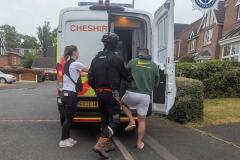
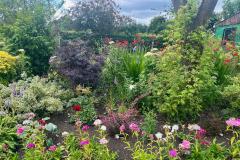
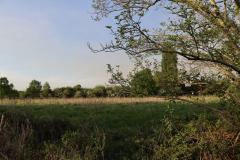

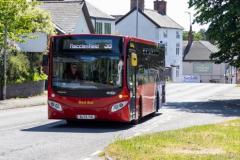

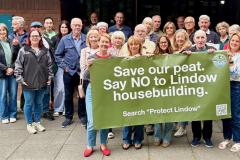
Comments
Here's what readers have had to say so far. Why not add your thoughts below.
Residents may be interested in the research which Friends of Dean Row has done into the links between Broadway Malyan and some of the developers which own large parts of Wilmslow's Green Belt. http://www.friendsofdeanrow.blogspot.co.uk
Also interesting reading is that on the CEC website Leader (elect) of the Council, Michael Jones, declares an interest in house-builders Taylor Wimpey, mentioned as owning Green Belt land on the Friends of Dean Row blogspot. One does not have to declare a beneficial interest if it is less than £25k.
http://bit.ly/JmBimv
Might it be possible that Cllr Jones has confused nominal value with market value when determining the threshold for disclosure? Possibly, but an online search suggests he is an ex investment banker, so one might expect him to know the difference.
To be clear, I am not suggesting that anything illegal or even underhand is going on here. I have no reason to doubt Cllr Jones' utter integrity and I actually believe this is simply an unfortunate set of circumstances for him. He probably knew nothing about TW's prior links with Broadway Malyan when they were appointed, or that TW owns significant parts of Wilmslow's Green Belt in Dean Row. I imagine he was utterly aghast (furious?) when he found out.
It would of course raise eyebrows right across Cheshire East were Green Belt status to be removed in Dean Row to the benefit of a developer in which Cllr Jones has a properly disclosed substantial interest, supported by a flawed consultation process run by a consultancy firm which just happens to count that very same developer as one of its clients!
But I don't expect this to happen, and Cllr Jones has already gone on public record as such. I expect that Cllr Jones has the interests of Wilmslow and Cheshire East as his priority, and hope his actions in helping to shape a sensible Wilmslow Vision over the coming months will support that.
The 1500 was based on the Consultants calculation based on Government formulas for the housing requirements of the town, We were also told that by these measures the town had failed to build enough houses in recent years. The consultants cannot be blamed for this unpleasant message, it is for the likes of residents of Wilmslow to influence the directives of governments about the true impact of housing requirements. None of the stakeholders, to my knowledge, questioned the number, we weren't in a position to dispute, but more importantly those who should have the knowledge (or easily able to get it) member of the town council and at least one Cheshire East councillor at no time in the meeting challenged the number.
There was considerable concern about the development of Wilmslow High School and it was given low priority stickers almost unanimously, I remember one of the consultants indicating surprise at this, and I did feel that there was an unwritten understanding that WHS would be a high priority.
I do feel that there wasn't enough time allocated to the development of the Leisure Centre, Rectory Fields and the Library and an underlying belief that the lifestyle/cultural corridor would go ahead regardless. We weren't given any statistics on what makes public services viable, so I was unsure if Wilmslow could ever support a theatre. Regardless of this I think there was universal opposition of another supermarket development being used to finance the 'package'.
There was a good deal of support for the green transport agenda of cycling, walking and the use of public transport for the town. However I do wonder about the 'joined up writing' approach of Cheshire East in hearing this at Vision Wilmslow and a consultation that took place in Handforth in September - where there was lots of criticism of poor public transport - that there is currently a consultation on cuts to buses!
I made a separate response to the consultants about a number of 'brown field' areas with potential development, but with the exception from an acknowledgement by the town clerk that it would be passed on, I heard nothing.
I am critical of the Town Council for accepting for consultation the Vision Wilmslow report if it was fundamentally flawed and as Coun Jones indicated in the Express Advertiser the consultants had gone beyond their brief. The notice for stakeholders to attend the presentation of the Vision Wilmslow document was far too short and we had to press to get a copy of the document in advance, which is appalling. Given that the whole process of consultation, completion of the report, presentation to the town council, should have been agreed at the on-set it is a disgrace that we were given one weeks' notice to attend.